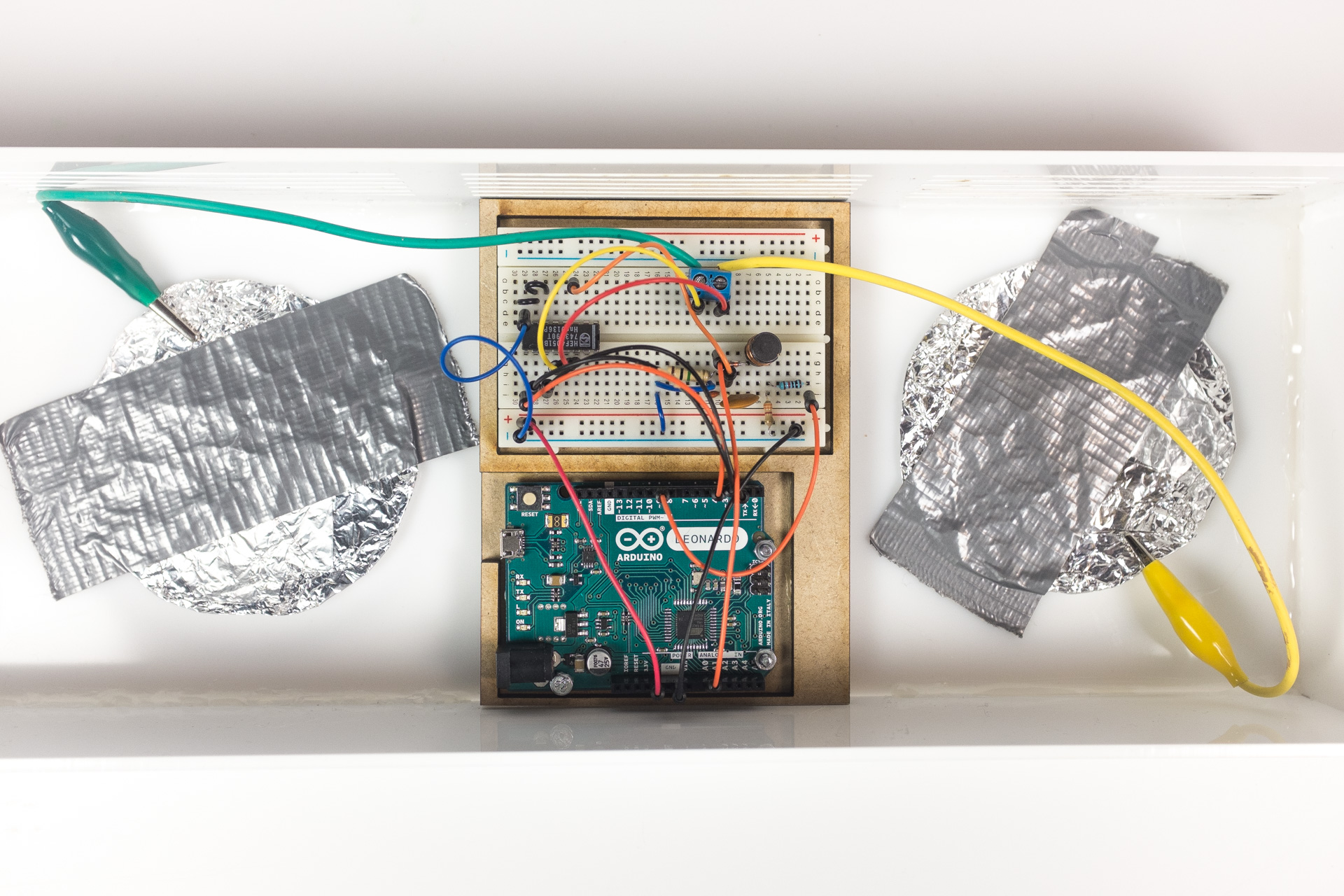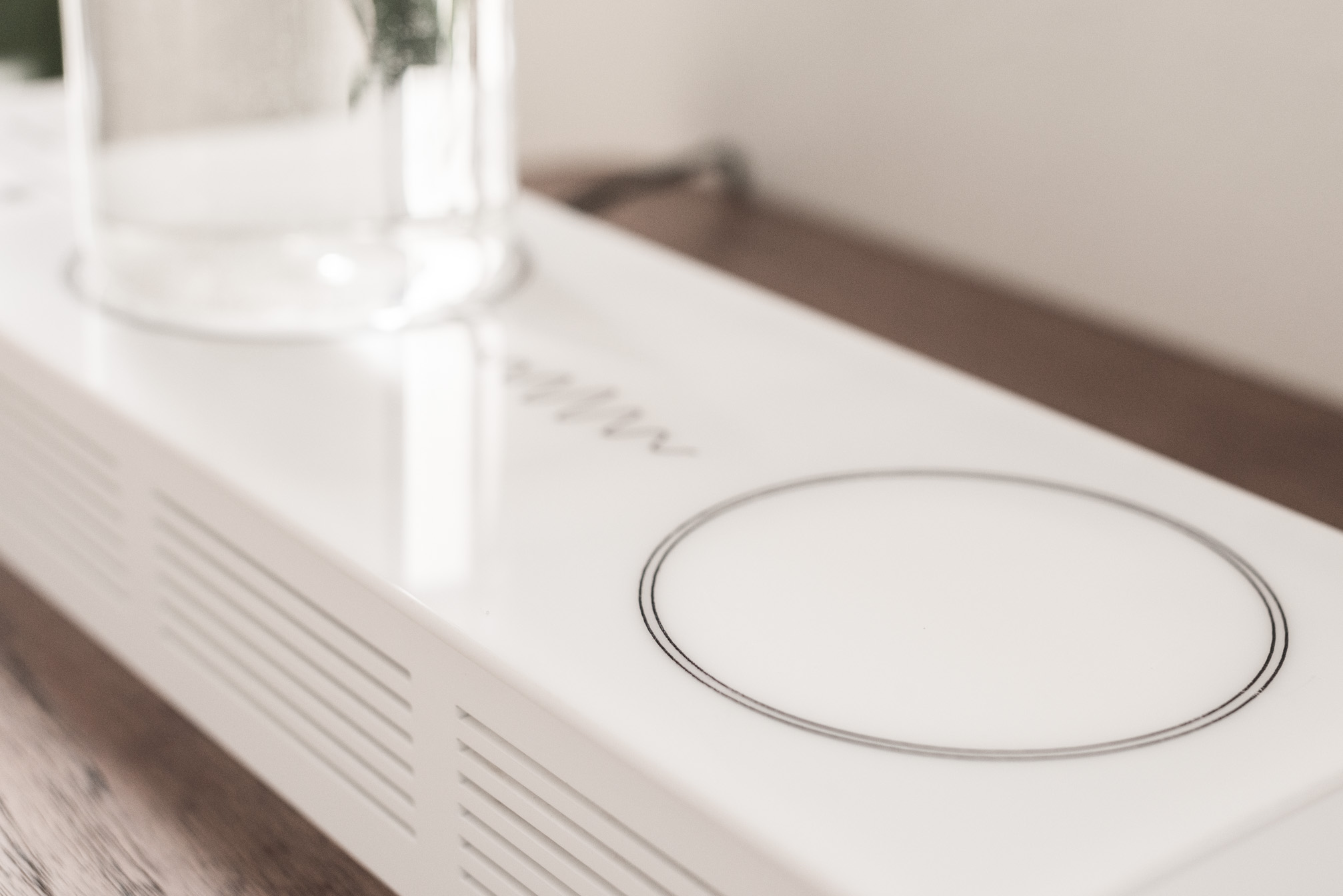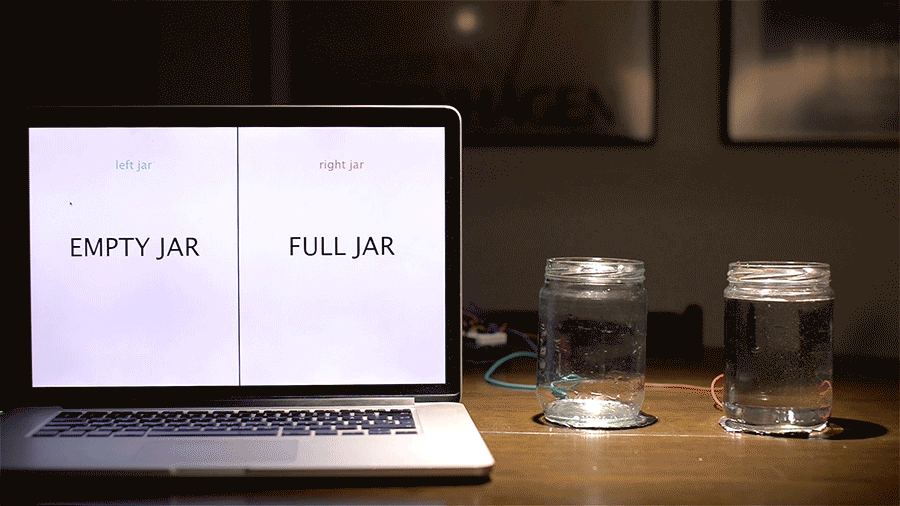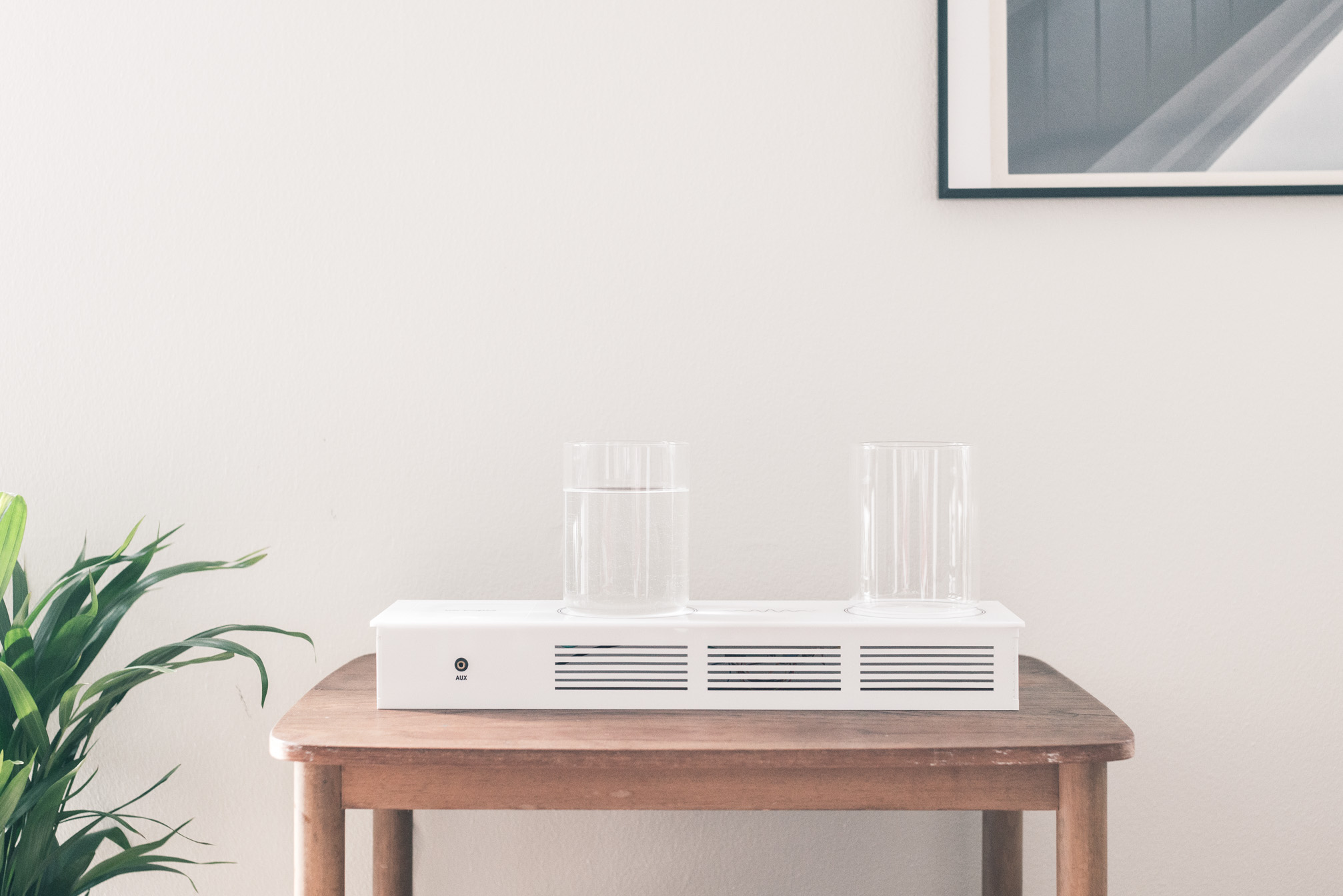
Pour Reception
2018, machine learning, tangible computing,
Honorable mention in FastCo Innovation by design awards 2018
In collaboration with
Simone Okholm Hansen
Victor Permild
Tools used
Processing, Arduino, Wekinator
Pour Reception is a playful radio that strives to challenge our cultural understanding of what an interface is and can be. By using capacitive sensing and machine learning, two glasses of water are turned into digital material for the user to explore and appropriate.
The design materials that we have available when designing digital artifacts expand along with the technological development, and with the computational machinery, it is possible to augment our physical world in ways that challenge our perceptions of the objects we interact with. In this project, we aim to change the user's perception of what a glass is - both cultural and technical.
The Pour Reception radio has internal speakers, an AUX input, a small guide, and an interface of two glasses resting on a smooth surface. When adding water to one or both glasses, the radio turns on and invites the user to explore the interface that controls the familiar functionalities of a radio. A playful attitude and a puzzle-inspired approach are almost required to create a new mental model for how the glasses function as an interface.
Instead of operating with dials and buttons, as one would do with traditional radio, Pour Reception is operated by interacting with the glasses. Changing the channel is achieved by pouring water from one glass to the other. Fine-tuning the channel, to filter off distortion and noise, is done by touching and grabbing a glass containing water. Finally, touching the water in the glass lets the user affects the volume of the radio.
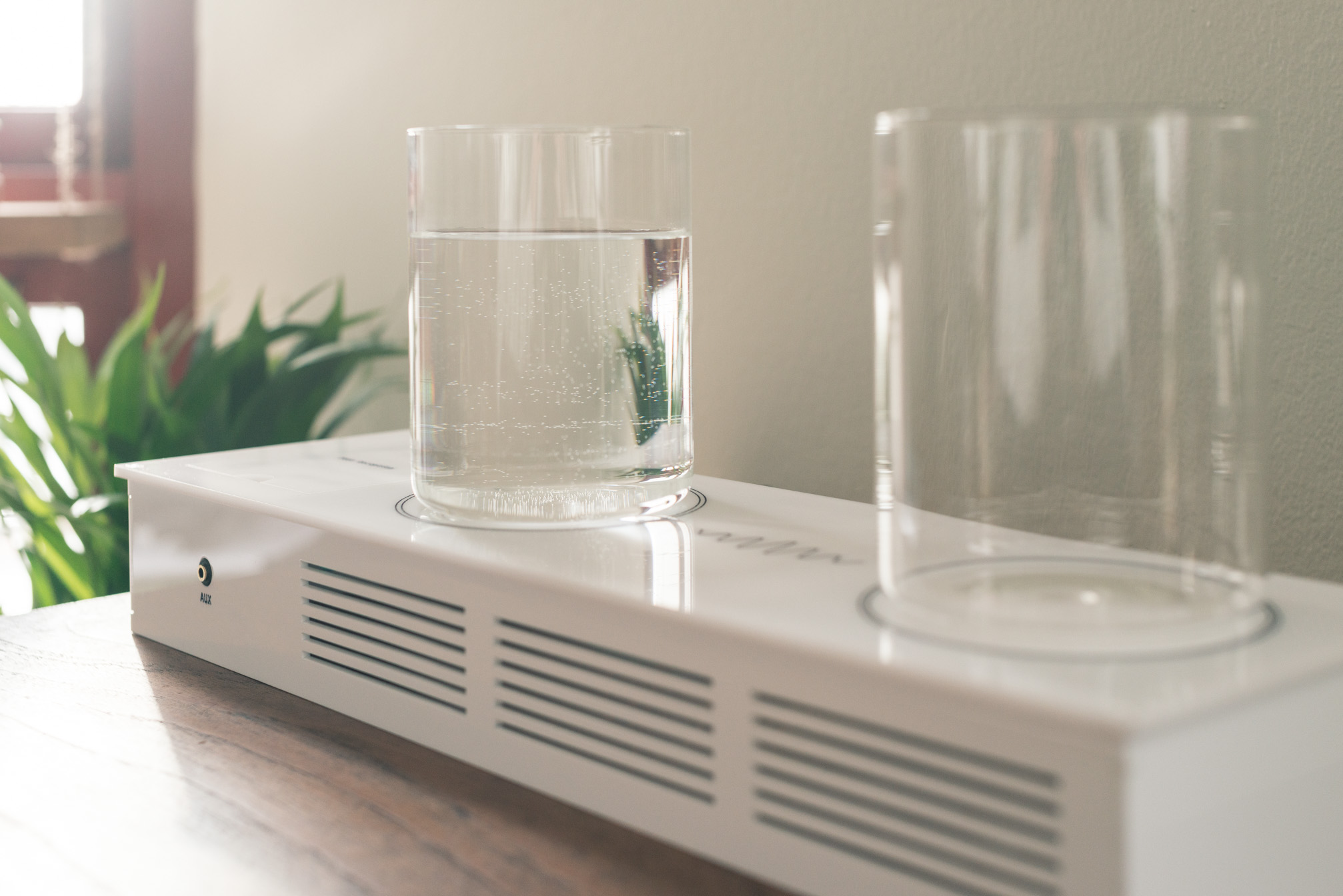
Instead of operating with dials and buttons, as one would do with a traditional radio, Pour Reception is operated by interacting with the glasses. Changing the channel is achieved by pouring water from one glass to the other. Fine-tuning the channel, to filter off distortion and noise, is done by touching and grabbing a glass containing water. Finally, touching the water in the glass lets the user affects the volume of the radio.
Our interaction patterns are highly determined by the designers of these products, and with Alias we are interested in how this power relation can be redefined, especially when it comes to privacy. The exciting future that “smart” technologies can give us often comes with conditions that diminish our privacy. With Alias we want to challenge this condition and ask what kind of “smart” we actually want in the future.
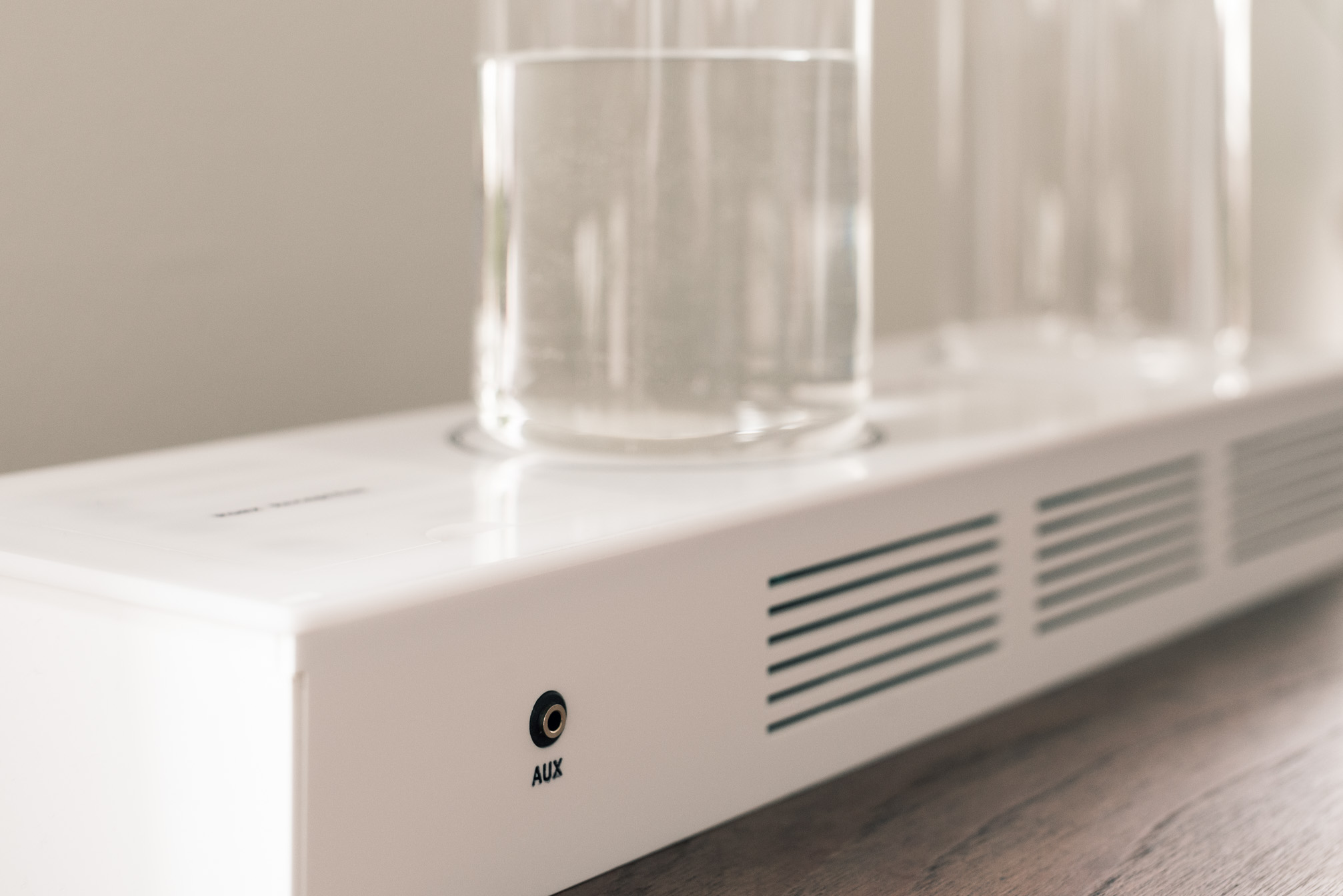
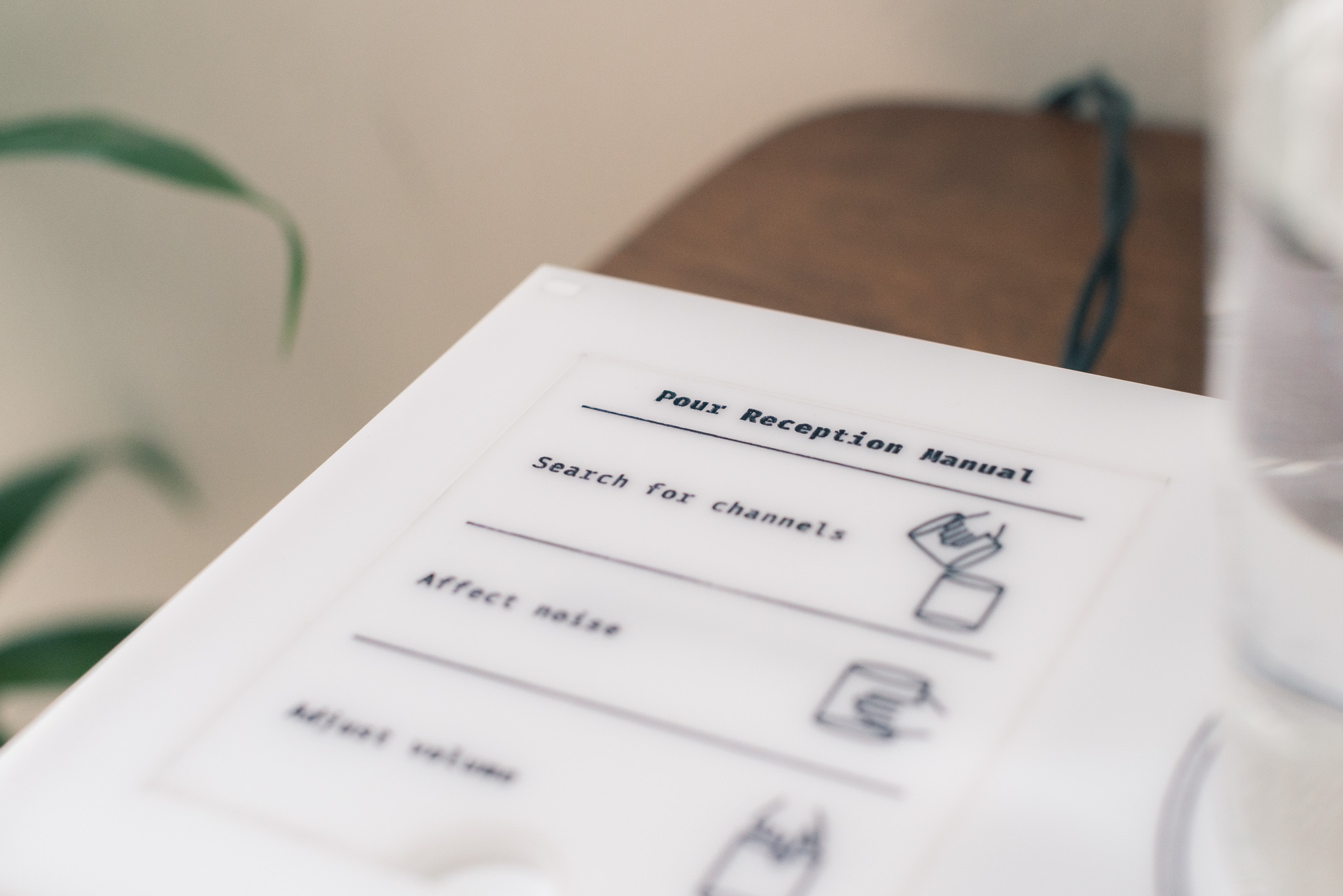
The technology of Pour Reception is based on capacitive sensing that can turn any conductive material into a sensor. While there is several methods for creating a capacitive sensor with Arduino, we have used the Tact library by NANDStudio to create a capacitive sensor which are capable of making readings with rich details.
Using these data readings together with Wekinator (an interactive machine learning tool), it is possible to classify various gestures when interacting with the glasses, and furthermore, map those gestures into commands for controlling the radio.
Another feature of capacitive sensing, that we harness, is how the readings of the sensor can be done through non-conductive materials (such as glass, wood, and acrylic). That makes it possible to create a “chain of sensors”, which allow us to hide the first link in the chain (aluminium plates) under the second layer (acrylic) and create an experience of soly interacting with the last chain (the glasses of water).
